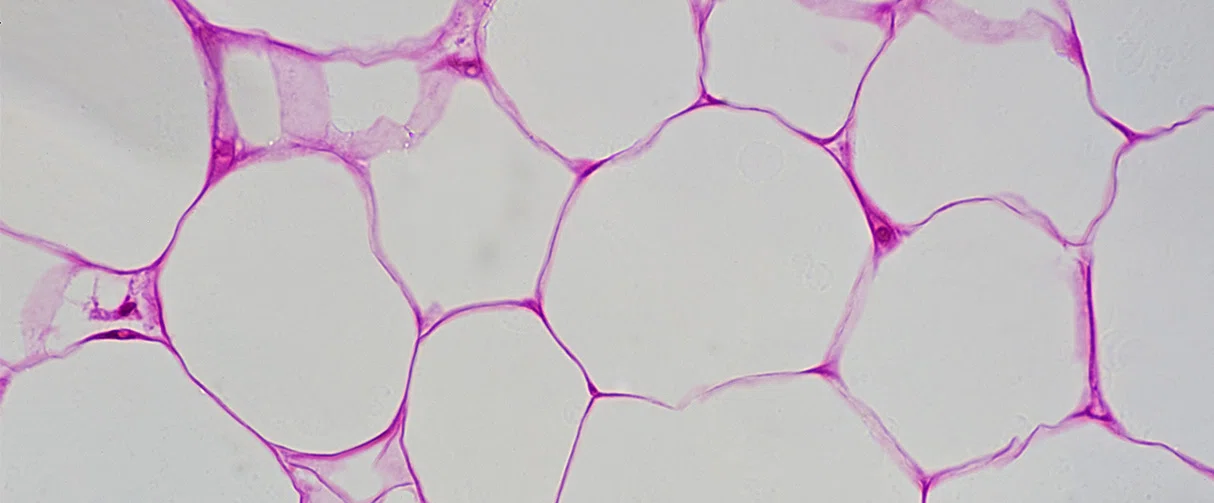


Precision Medicine
A potential strategy to enhance multiple myeloma therapeutic efficacy

Although the first well-known case of multiple myeloma (MM) was documented in 1844, it has likely been recognized for thousands of years. The ability to treat this form of blood cancer continues to evolve as our understanding of the cellular underpinnings grows. A research team at Houston Methodist has shed new light on the interactions between MM cells and adipocytes, creating a possible new approach to developing MM therapies.
As the second most prevalent hematologic cancer in the United States, MM accounts for more than 10 percent of all blood cancers. While current therapies including bortezomib and carfilzomib are modestly successful, patients experience a high rate of relapse, therapeutic resistance or refractory disease following treatment.

Jing Yang, PhD
At the cellular level, MM is caused by the clonal expansion of antibody-producing plasma cells within the bone marrow. Abundant adipocytes within the bone marrow contribute to MM development and pathogenesis by participating in MM growth, mediating obesity-induced tumorigenesis, recruiting tumor cells to specific bone areas and regulating osteoclast and osteoblast differentiation and activity. Interestingly, bone marrow adipocytes also contribute to MM therapeutic resistance via inhibition of chemotherapy-induced tumor cell apoptosis.
In an effort to better understand exactly how the adipocyte-rich bone marrow microenvironment induces MM drug resistance Jing Yang, PhD, associate professor of oncology, and her team explored the intracellular communication among key cellular machinery, MM cells and adipocytes using both murine models and MM patient samples.
MM cells can program adipocytes to secrete distinct adipokines or cytokines that work against MM treatments by creating a bone marrow microenvironment that is more favorable for MM growth and survival. Apart from adipokines, adipocytes also secrete exosomes that play a role in tumor-stroma cellular communication as well as stroma-induced tumor drug resistance. These can carry non-coding RNA molecules, including long non-coding RNAs (LncRNAs) which can be transferred to another cell upon engulfment.
Yang and her team tested the hypothesis that MM cells modulate LncRNA enrichment into adipocyte exosomes which when internalized into MM cells inhibit chemotherapy-induced apoptosis. They collected exosomes from MM patient adipocytes which protected MM cells from chemotherapy-induced apoptosis. Specifically, two LncRNAs (LOC606724 and SNHG1) were upregulated in MM cells post-exposure to adipocyte exosomes which correlated with worse patient outcomes.
There is a balanced communication between MM cells and adipocytes in the bone marrow microenvironment which is regulated by the exosomal packaging of LncRNAs. Interestingly, LncRNAs regulate oncogenes and function in the pathogenesis of benign and malignant ailments.
Using methyltransferase activity assays and dot blotting, Yang’s study was the first to demonstrate that methyltransferase like 7A (METTL7A) possesses RNA methyltransferase activity that participates in LncRNA m6A methylation and contributes to adipocyte-induced MM therapeutic resistance. Upon methylation, LncRNAs are packaged into exosomes. Yang also demonstrated that pharmaceutical or genetic depletion, using adipocyte-specific enhancer of zeste homolog 2 (EZH2) knockout mice, of EZH2 diminishes METTL7A protein methylation levels in MM-associated adipocytes thereby affecting LncRNA methylation and exosomal LncRNA packaging.
Furthermore, Yang evaluated the effects of combination therapy of bortezomib with tazemetostat, a drug approved by the Food and Drug Administration for the treatment of follicular lymphoma on tumor growth.
“In multiple myeloma, preclinical studies show that tazemetostat has a tumoricidal activity with additional therapeutic effect on multiple myeloma-associated bone disease through regulation of osteoblast differentiation and activity,” said Yang. “We confirmed that combining bortezomib with tazemetostat significantly reduces exosomal LncRNA levels in marrow adipocytes. Thus, our results may provide an additional mechanistic insight for improving the clinical efficacy of tazemetostat within the tumor microenvironment.”
The important findings in this study improve our understanding of MM pathobiology and pinpoint the cycle between MM cells and adipocytes as a potential target for designing novel anti-MM therapeutic agents.
The bone marrow makes 220 billion new blood cells each day. Multiple myeloma (MM) is a malignancy of the antibody producing plasma cells in the bone marrow.
Adipocytes collectively are considered an endocrine organ which affects metabolism and homeostasis. Adipocytes secrete many lipids and protein factors and can morph into different characterizations, including exosomes.
Exosomes are critical for tumor-stroma cellular communication. Precisely how they affect the interaction between MM cells and adipocytes is unclear. Are these exosomes involved in MM relapse and therapeutic resistance? Therapeutic resistance to MM is a significant issue since it is an impediment in the path to a definitive cure.
Jing Yang used both preclinical models and MM patient adipocytes to investigate the mechanism behind how the adipocyte-rich microenvironment affects therapeutic resistance to MM.
The study found that two LncRNAs (LOC606724 and SNHG1) are upregulated in MM cells after exposure to adipocyte exosomes.
Findings from Jing Yang’s study create new potential treatment avenues and a potential solution to MM therapeutic resistance.
MM = multiple myeloma; LncRNA= Long non-coding RNA
Zhiming Wang, Jin He, Duc-Hiep Bach, Yung-Hsing Huang, Zongwei Li, Huan Liu, Pei Lin, Jing Yang. Induction of m6A methylation in adipocyte exosomal LncRNAs mediates myeloma drug resistance. J Exp Clin Cancer Res. 2022 Jan 3;41(1):4. doi: 10.1186/s13046-021-02209-w.
This research was supported by the National Institutes of Health/National Cancer Institute (R01 awards CA190863 and CA193362).
Abanti Chattopadhyay, PhD
October 2022
Related Articles





